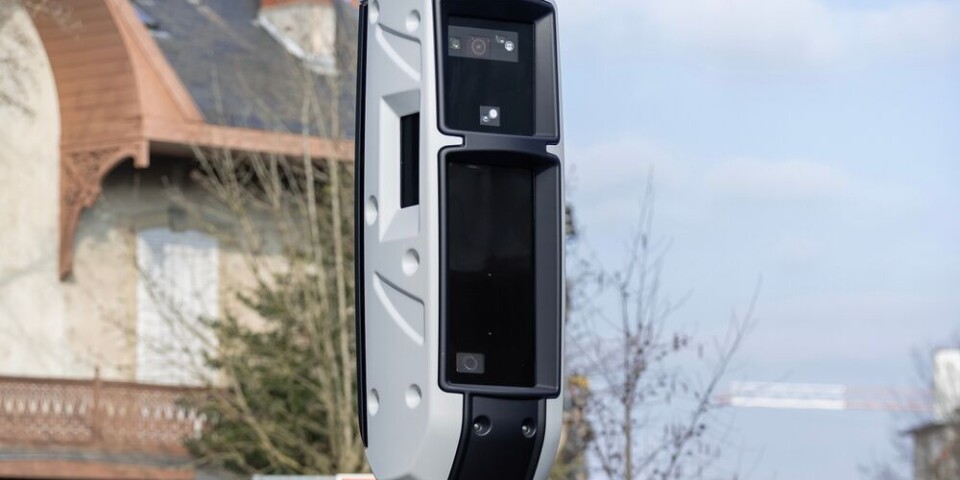-
‘No evidence third party involved’ in deaths of British couple in south-west France
Investigators update The Connexion on Dawn Kerr and Andrew Searle case
-
MPs push to remove low emission zones in France
Critics say the zones penalise lower-income households, but the government has warned abolishing them could cost billions
-
Trump tariffs: Americans in France hit by dollar drop
Europe has said the tariffs will cause the economy to ‘massively suffer’ as France plans retaliation
EU debate on banning polluting microplastics continues
Companies are lobbying a European Union agency to stop it from banning microplastics - plastic particles that end up in nature or which are added to products intentionally - but which critics say are poisoning the planet.

Microplastics are at the centre of a fierce debate within the chemical products branch of the EU, The European Chemicals Agency (ECHA), based in Helsinki.
The ECHA, in its own words, “works for the safe use of chemicals [and] implements the EU's groundbreaking chemicals legislation, benefiting human health, the environment and innovation and competitiveness in Europe”.
It is now set to propose strict rules on the use of microplastics, as part of EU regulation on the issue. An initiative from January 2019 is set to bring about the strictest restrictions on the products since 2007, and is working to ban certain types of these particles.
Environmental campaigners say that microplastics are easily disseminated into the environment with serious consequences for the seas, oceans, and air - including the poisoning of fish and seafood destined for human consumption.
What are microplastics?
There are two kinds of microplastics, which are essentially particles of plastic that are largely invisible to the human eye but which can build up in large quantities and cause severe environmental damage.
The first kind is the residue of existing objects that is shed during normal use. According to a report from 2017, the main sources of microplastic emissions in global water are from vehicle tyres (94,000 tonnes per year); residue lost during plastic making process (41,000 tonnes); and road markings (15,000 tonnes).
Microplastics can also be produced during the breakdown of larger waste plastic items, and by the washing of synthetic materials.
In total, more than 176,000 tonnes of microplastics end up in nature each year in Europe, the ECHA has said.
The second kind of microplastics are added to products “intentionally”, according to the ECHA. The most well-known examples of this are “microbeads” added to face wash or exfoliator creams; but they can also be found in fragrances, paint, inks, detergents, construction materials, artificial turf, fertiliser, and even medication.
They can both cause severe and long-term issues for human health and the environment.
Micro, nano - what counts?
In a report from January 2019, the ECHA said: “It is not possible today to conclude with reasonable certainty that negative effects are not happening right now in the environment, or will not happen in future.”
The agency estimates that a ban would reduce microplastic emissions by around 500,000 tonnes over 20 years.
The ECHA is therefore now seeking to ban products currently defined as “micro” or “nano”, as they are not deemed to be “safe” in any quantities, and build up permanently over time. But this definition is contested.
There is disagreement over what can and cannot be termed “micro” - and the dimensions of the particles under said definition - and much of the current debate centres on this. The definition centres on millimetres and sometimes even nanometres.
The ECHA originally defined “micro” as particles measuring between 0.000 001 millimetre (mm) - one nanometre or nm -, and five millimetres, or 3 nm - 15 mm for fibres.
Industry objections
Yet, during public consultations on the issue - which concluded on September 1 - more than 477 contributions and objections were recorded, mainly from the chemical, plastics and cosmetics industries.
Lobby group from plastic sector PlasticsEurope said: “The industry cannot support this. The scientific proof given to justify the proposed principles does not comply with the norms required for the application of these precautions.”
Similarly, the European Chemical Industry Council (ECIC) said that the ECHA proposals “do not respect the regulations, do not reach the objectives for the protection of human health and environment, and therefore cannot be supported by the industry.”
NGOs criticise ECHA for ‘diluted’ proposal
And while lobby groups for the industry contest the proposed ban, some NGOs have criticised ECHA for not going far enough, and for letting lobby groups dilute the original terms.
NGO the European Environmental Bureau (EEB) said that an update from ECHA had seen the definition of a size of a “microplastic” particle increased by 100.
This would “allow the industry to continue to use or to allow nanoparticles that are more toxic and easily absorbed by living cells”, the NGO said.
EEB also said that the proposals had other issues, such as very long lead times for companies to change their “recipes” to avoid using microplastics - such as in perfumes or pesticides. Under the current proposals, manufacturers would have three years to present their ingredients, and eight years to develop a biodegradable alternative.
EEB has said that this lead time should be much shorter and rejected the new definition of “micro” and “nano”.
The NGO has also said that the new proposals from ECHA, following consultation with the chemical and plastic industry, had “diluted” the plans beyond recognition. In an analysis report published on Tuesday September 1, it said: “Result: This EU initiative has been so deformed that, without changes, it will actually aggravate the problem instead of improving it.”
‘Nonsensical’ and unmeasurable nano size?
But, in defence of the ECHA changes, the ECIC said: “The limit below a nanometre is physically nonsensical. European legislation must be applicable. To check the conformity of products, we must be able to measure their content of microplastics. No standard analytical methods exist to detect substances at such low levels.”
In defence of its changes, in a letter to newspaper Le Monde, ECHA did not deny that its definition of “micro” had indeed changed due to lobbying from industry groups, but it said that it had only changed it so that “any potential restrictions can be applied”.
“Some use microplastics that measure less than 100 nm, but they are rare.” It added that its analytical committee had recommended that this lower limit would only be “temporary” in any event.
It denied that its proposed legislation had been diluted, and said that its proposals were among some of the “most ambitious” in the world, and had “been updated...based on solid arguments and proof by diverse interested parties.
“These modifications have been done to make our proposal more realistic, to minimise the costs for society, and to ensure that it can be applied efficiently - while not delaying the reduction in emissions.”
Nano tools
Experts in the industry estimate that tools that can measure nanometres at infinitesimally small levels may be available within two years.
Professor Martin Wagner, biologist at the Norwegian University of Science and Technology in Trondheim, told Le Monde: ”In two years' time, perhaps, we will have a good tool, which will allow us to analyse what cannot be measured today.”
He added: “The question of size is very arbitrary.” Professor Wagner recently proposed a size of 1 to 1,000 micrometers for microplastics, and 1 to 1,000 nm for even smaller plastics, nanoplastics - but there is currently no scientific consensus on this.
He said: “The transparency of manufacturers on the materials that they use is crucial. If we don’t know what materials they use, then it is impossible for us to measure them in the environment.”
The ECHA is set to publish the final version of its proposals at the end of this year.
Related stories
French Pyrenees polluted by high microplastic levels
























